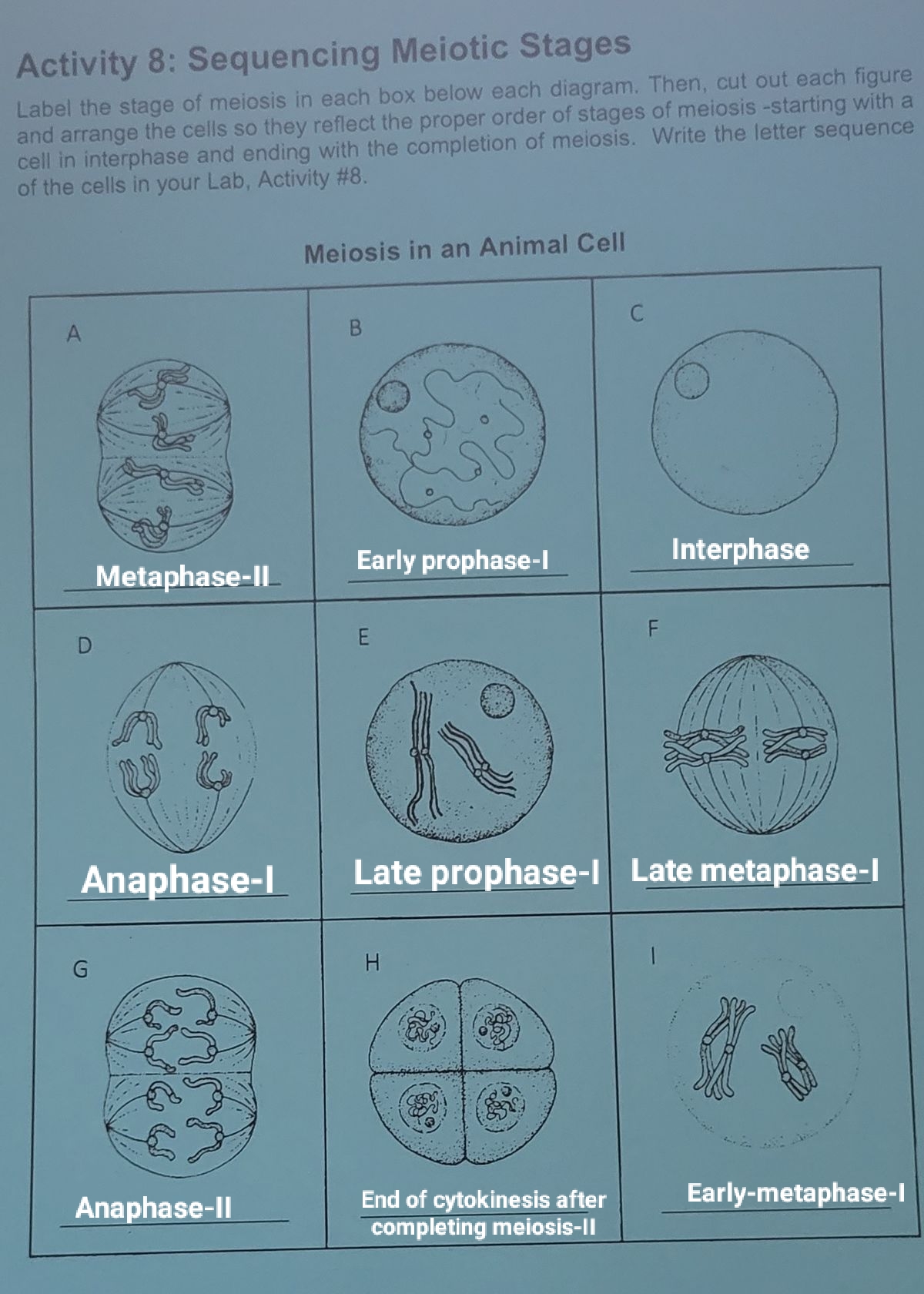Q1: Prior to going through meiosis, the nucleus would look like which letter? (Write just the letter below.) Q2: Next, the mitotic spindle fibers start to organize into centrosomes and these centrosomes pull away from each other, but since these images just show the nucleus, you don't see that here. While the mitotic spindle fibers are reorganizing, the DNA chromosomes start to condense, which you do see here. This is represented by what image? Q3: Once the DNA is completely condensed and organized into chromosomes, homologous chromosomes pair up in a process known as synapsis. This is represented by what image? Q4: Synapsis sets
Oogenesis
The formation of the ovum (mature female gamete) from undifferentiated germ cells is called oogenesis. This process takes place in the ovaries (female gonads). Oogenesis consists of three stages known as the multiplication phase, growth phase, and maturation phase.
Cell Division
Cell division involves the formation of new daughter cells from the parent cells. It is a part of the cell cycle that takes place in both prokaryotic and eukaryotic organisms. Cell division is required for three main reasons:
Q1: Prior to going through meiosis, the nucleus would look like which letter? (Write just the letter below.)
Q2: Next, the mitotic spindle fibers start to organize into centrosomes and these centrosomes pull away from each other, but since these images just show the nucleus, you don't see that here. While the mitotic spindle fibers are reorganizing, the DNA chromosomes start to condense, which you do see here. This is represented by what image?
Q3: Once the DNA is completely condensed and organized into chromosomes, homologous chromosomes pair up in a process known as synapsis. This is represented by what image?
Q4: Synapsis sets the homologous chromosomes up for crossing over when homologous chromosomes exchange parts of their DNA with each other. This is represented by what image
Q5: At this point, the nuclear envelope is completely dissolved and no longer visible. The homologous chromosomes are lined up in the middle by the mitotic spindle fibers. This happens as the mitotic spindle fibers extend out from the centrosomes and grab on to the centromeres of the homologous chromosomes. However, in meiosis, the homologous chromosomes all line up in pairs in the middle of the cell. Each pair chooses which side of the cell they want to be on separately from other homologous pairs. This is called independent assortment. This process is represented by what image?
Q6:The homologous chromosomes are then pulled apart from each other by the centrosomes. A single replicated chromosome from each homologous pair is pulled to opposite sides of the cell. This is represented by what image? Q7:
After the homologous chromosomes pairs are separated from each other, the DNA begins to unravel and the nuclear envelope reforms. Cytokinesis, or cell division, also occurs, generating two cells from one. However, because these cells have only one chromosome of each of the homologous pairs that were once in the cell, the cells that are formed at this point are haploid.
The cells continue to progress through meiosis when the DNA in these haploid cells condenses into visible chromosomes once again and the nuclear envelope dissolves. The DNA of these two cells then line up in the middle of the cell once more (pulled by spindle fibers), but this time they line up single file. This is represented by what image?
Q8: The centrosomes pull on the chromosomes, splitting them apart at their centromeres. The sister chromatids are split apart from each other, generating two chromosomes from each single replicated chromosome. This is represented by what image?
Q9: Each of these two cells then go through cytokinesis, forming four cells. The nuclear envelope of these four cells reforms and the DNA unravels in each. This is represented by what image?

Trending now
This is a popular solution!
Step by step
Solved in 3 steps









